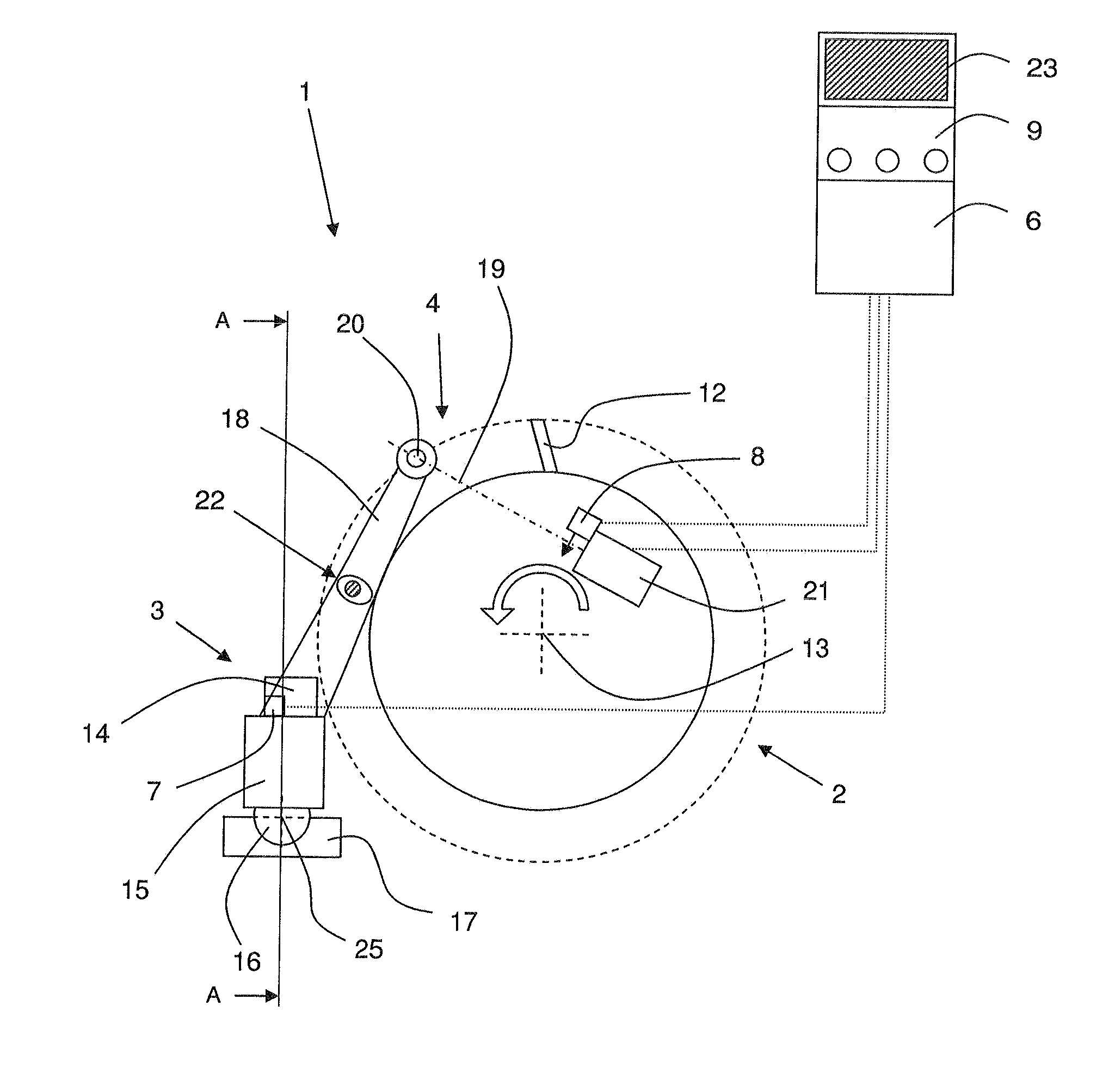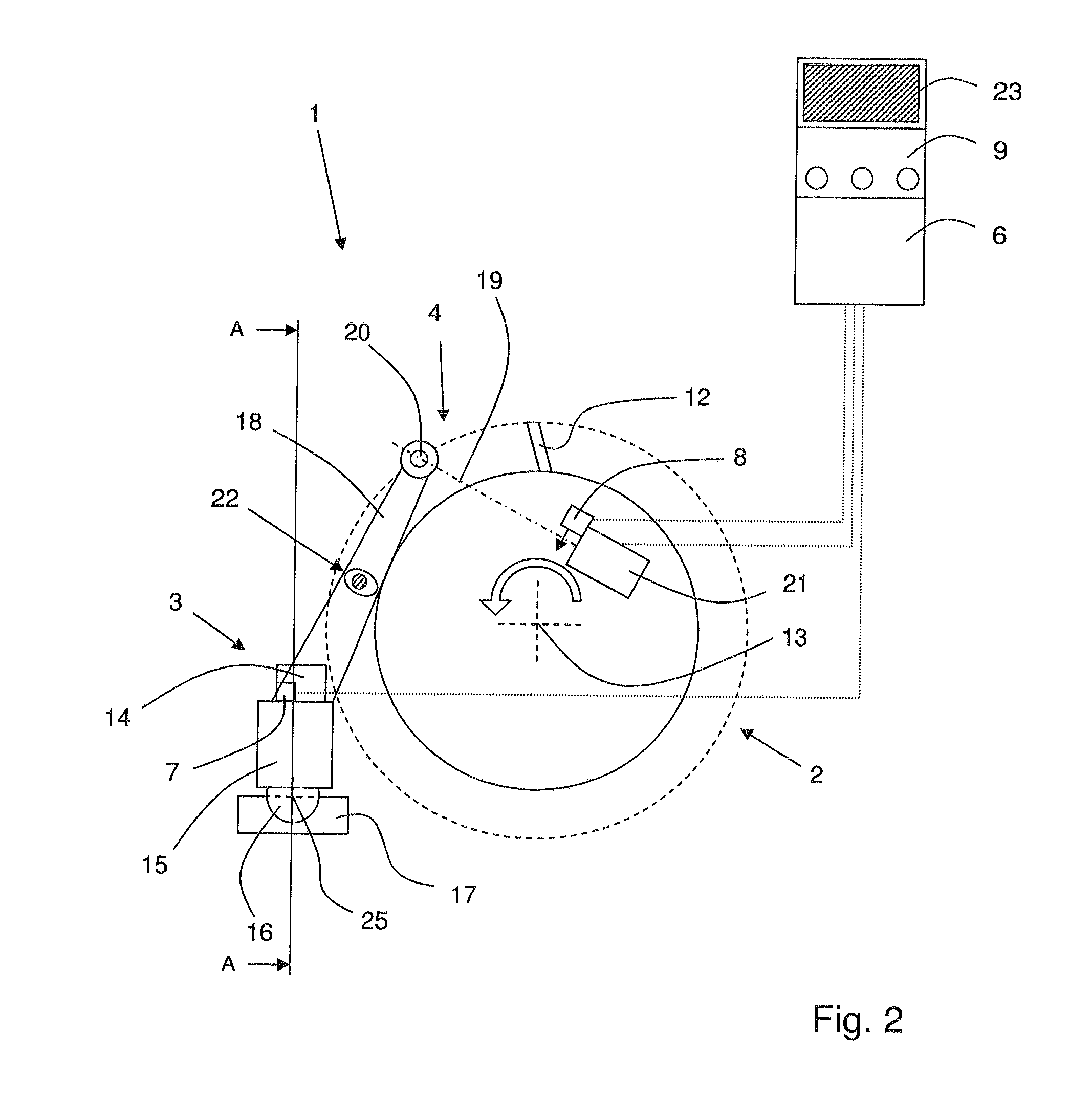Cutting device
- Summary
- Abstract
- Description
- Claims
- Application Information
AI Technical Summary
Benefits of technology
Problems solved by technology
Method used
Image
Examples
Embodiment Construction
[0032]FIG. 1 shows a forage harvester 10 as an example. Forage harvester 10 is designed as a self-propelled harvesting machine having a front axle and a rear axle, and is suitable for driving across a field to harvest the plant crop which is indicated. During harvesting operation, forage harvester 10 cuts the plant crop from the field using a front attachment, which is not described in greater detail, and directs it to an intake conveyor mechanism 11 which comprises, inter alia, two pair of compression rollers which compress the harvested material. Next, the harvested material is conveyed to a cutting device 1 (“chopping assembly”) which mainly comprises a rotating cutting cylinder 2 and a shear bar 3 which is stationary relative thereto. The design and mode of operation of cutting device 1 are explained in greater detail with reference to FIGS. 2 and 3. The crop is fragmentized as it passes through cutting device 1, thereby enabling it to be conveyed through a conveyor chute which ...
PUM
 Login to View More
Login to View More Abstract
Description
Claims
Application Information
 Login to View More
Login to View More - R&D
- Intellectual Property
- Life Sciences
- Materials
- Tech Scout
- Unparalleled Data Quality
- Higher Quality Content
- 60% Fewer Hallucinations
Browse by: Latest US Patents, China's latest patents, Technical Efficacy Thesaurus, Application Domain, Technology Topic, Popular Technical Reports.
© 2025 PatSnap. All rights reserved.Legal|Privacy policy|Modern Slavery Act Transparency Statement|Sitemap|About US| Contact US: help@patsnap.com



